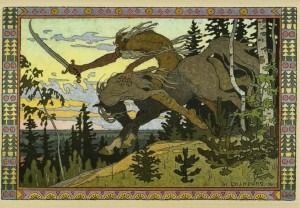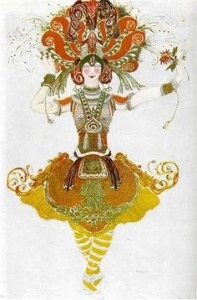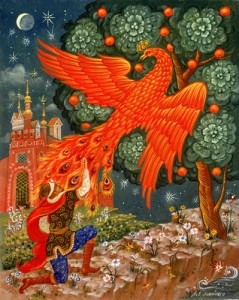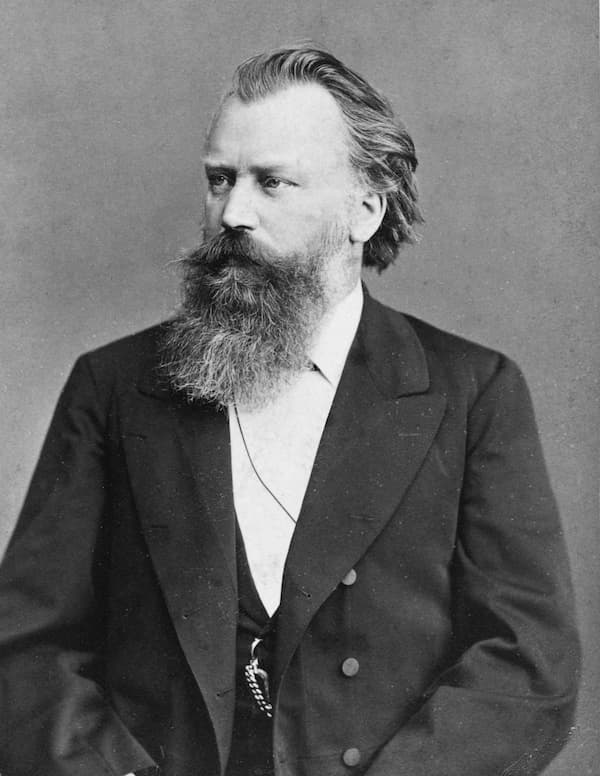
Koshchey the Deathless by Ivan Bilibin, 1901
The story combines the mythical firebird with the Russian folktale of Koschei the Deathless or Koschei the Immortal. In most stories, Koschei is the bad guy, having usually abducted the wife of the hero. Koschei is The Deathless because he has hidden his soul; unless the hero can find the hidden, all battles against Koschei are fruitless. The Firebird, in our story, lives in Koschei’s garden. Koschei has not only captured many princesses but also has turned their suitors into stone statues.

Leon Bakst: The Firebird, costume for Tamara Karsavina
Into the garden of Koschei the Deathless wanders Prince Ivan, who has gotten lost while hunting. He captures the Firebird and when she begs for her life, spares her. In return, she grants him an enchanted feather that will allow him to summon her when in need. Thirteen princesses, held captive by Koschei, entrance him and he falls in love with one. Koschei battles with Ivan, but Ivan summons the Firebird who makes all his enemies dance (34:18) and fall asleep (38:24). The Firebird shows Ivan where Koschei’s soul is hidden (in an egg, in a casket, in a tree stump) and Koschei is defeated (43:19). The ballet concludes with a final procession where the petrified princes awaken in their original forms (45:00), the 13 Princesses return, and Ivan gets his princess.

Ivan captures the Firebird
The other sound this work is known for is the magnificent ending where the orchestra slows and slows, repeating its music again and again until they hit the last chord sfff (sforzandissimo) – where we have a sudden change in dynamics. The full orchestra hits the chord and falls from fff (fortissimo) to pp (pianissimo) before bringing up the volume quickly to end again at fff. It has been often imitated but this use of the sforzando ending was all that more wonderful for being surprising.
We have to thank Diaghilev from moving from reusing old music with new steps to actually commissioning new music to go with his new choreography commissions. It resulted in some of the most interesting and innovative 20th century pieces, including not only The Firebird but also Petrushka and The Rite of Spring, Ravel’s Daphnis et Chloe, Prokofiev’s The Prodigal Son, and Debussy’s Jeux and his Prélude à l’après-midi d’un faune.

